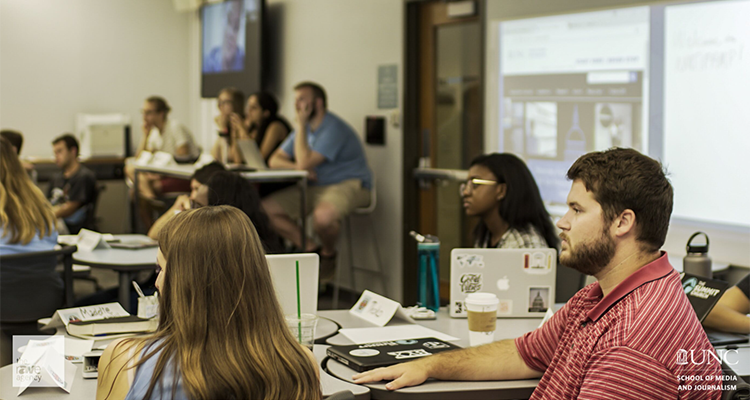Collaboration Space Interface Design
 For the past several years in higher education, the active learning classroom has grown in popularity. With these active learning classrooms comes an increase in technology. Many of the classrooms have multiple displays and multiple ways of getting your content onto those displays. These may consist of flat panels, projectors and interactive whiteboards. The expectation of these rooms is that the teachers and students bring their own technology into these spaces. This technology may be cell phones, iPads, tablets or computers. Because these are being brought in by the users of the room, the designers have no idea what type of devices are being brought in. All of this makes for a complicated design. Our AV designers (internal or external) are extremely talented at designing these systems. The problem comes when we have to design the interface. How do you make a usable system with all this complexity?
For the past several years in higher education, the active learning classroom has grown in popularity. With these active learning classrooms comes an increase in technology. Many of the classrooms have multiple displays and multiple ways of getting your content onto those displays. These may consist of flat panels, projectors and interactive whiteboards. The expectation of these rooms is that the teachers and students bring their own technology into these spaces. This technology may be cell phones, iPads, tablets or computers. Because these are being brought in by the users of the room, the designers have no idea what type of devices are being brought in. All of this makes for a complicated design. Our AV designers (internal or external) are extremely talented at designing these systems. The problem comes when we have to design the interface. How do you make a usable system with all this complexity?
My college is part of a group of small liberal arts colleges. Recently, this complexity was brought up on our email list by one of the institutions leaders. They lamented the confusion of users (teachers and students) walking into a room and figuring out how to use the system. This initial email was followed by others with the same frustrations. I have given this some thought over the past few weeks and have some suggestions for this group and for all other designers and integrators.
My first suggestion, and this is serious, is that sometimes less is more. Any active learning classroom should include an easy way to get metrics on the use of technology in the classrooms. I think that institutions need to do a serious look at these metrics and seriously address the question of what technology, at all, needs to be in the room. When spending the kind of money colleges do on these rooms, we can not simply use anecdotal data and money needs to be put in the right place. When I speak with colleagues at my institution and at others, one of the things I hear that is used the most are the tablet white boards or wall-mounted white boards. Also, tables with writing surfaces seem to be popular. Asking these questions is understandably difficult for integrators because it could lead to the loss of business. Most integrators don’t want to talk customers out of doing business with them. Dealing with furniture companies in these discussions is often productive. Yes, they have furniture they want to sell you, but they often have done some research into what works or have case studies from schools they have worked with.
A second suggestion, after you have done your research, and decided that technology is necessary, is that less is more. My experience, and that of many of my colleagues, is that too often the integrator (or even architect in some cases) is too willing to design a system that will do everything possible. I believe they are not providing a good service here. We all need to be realistic in these cases. How can you design an interface that will allow for this? In my opinion, you can’t. One of the biggest problems in this situation is actually not the faculty — it’s the students. Many students walking into our classrooms today are quite capable of using social media tools, but are not truly digitally literate. They are bringing in a wide variety of devices, with various versions of software and various updates to the devices. They often don’t understand the basics of how to troubleshoot their devices, nevermind how to connect their devices to external displays, either with wires or wirelessly. Therefore, no designer can put together a system to address all of these devices. So talk with the faculty who will be using the room. Help them understand the real issue. Then work with them through how they will actually use the system. I have previously written about human-centered design, and this is a good time to use it. Observe a classroom that is using active learning. What is going on? What technology is being used? Take that information and design a system around it.
My final suggestion (and I understand this sounds weird for active learning) is to control the system as much as possible. If you actually need multiple displays in a room so that students can work together around them, put a dedicated input device (computer, iPad, etc.) at that location. Now, this system can be properly managed and controlled. You know the device that is there, and you can ensure models, upgrades, etc. While some will claim that this limits the space, I would disagree. I actually think putting a system in place that ends up being so confusing no one uses it is actually more limiting. At my institution, perhaps our greatest success with active learning has been in our labs. Here, we have dedicated machines and a controlled system. Faculty can easily guide students from doing work with physical items, to do doing work on the computers and, if necessary, displaying that on displays in the room. There is no fumbling with computers to get them to work; they are just there and they just work. In many cases, this work we have done in our science labs has freed up other classrooms. Rather than move from a classroom to a lab, the faculty stay in the lab for the entire semester.
I believe that the best thing we can do as technologists is to help people understand when technology helps and when it doesn’t. It’s also important for us to understand the abilities and limits of of users and their technology. Integration firms can earn business and provide value by demonstrating to customers that they are willing to do what is best for the customer and in turn for themselves in the long run.




